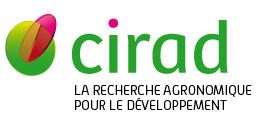Indonesian green arabica coffee growing zones characterization using near infrared spectroscopy
Davrieux F., Durand N., Sianturi J., Fischer D.F.. 2011. In : Proceedings of the 23rd International Conference on Coffee Science; Bali, Indonesia, October 3-8, 2010. Paris : ASIC, p. 1003-1010. International Conference on Coffee Science. 23, 2010-10-03/2010-10-08, Bali (IndonÃĐsie).
The Specialty Coffee Association of Indonesia (SCAI) is a trade association formed in February 2008, whose goal is to improve the quality of Indonesian Arabica coffee. SCAI represents all steps in the coffee supply chain, from the Indonesian Coffee and Cocoa Research Institute (ICCRI) to coffee retailers and importers. The 93 SCAI members export more than 60% of Indonesia's Arabica coffee. A key concern of SCAI is to increase the traceability of Indonesia's Arabica coffee. In the traditional system, coffee is bought and sold through several layers of village and town collectors, before being exported. This system obscures the origin of the coffee, mixing high and low quality coffee. Importers and roasters are demanding more information about the origins of Indonesian coffee, and they are willing to pay higher prices for traceable coffee. Since 2008, SCAI has implemented different inter-related projects, designed to increase coffee traceability 1) Working with industry stakeholders to develop digital maps of each Arabica coffee origin 2) Supporting efforts by members to develop Geographical Indications (G.I.), following the lead of Bali Kintamani and 3) conducting researches on the characteristics of coffee type samples from each origin, to create a quantitative method for determining origin. For the present study, three sets of samples were prepared for 3 origins: Sidikilang, Lintong and Aceh Gayo. To produce the type samples, ten-kilogram lots of parchment coffee were purchased from village collectors distributed evenly across each origin. Village collectors typically aggregate and hull coffee from up 40 to 80 surrounding farmers. The coffee samples were processed following the traditional wet hulling or "giling basah" method. A total of 32 samples were processed and sun dried. Near infrared fingerprint of ground (<0.5 mm) green coffees were scanned using monochromator instrument NIRS 6500 (Foss NlRSystems, USA). Caffeine, chlorogenic acids, sucrose, fat; moistu
Mots-clÃĐs : fÃĻve de cafÃĐ; coffea arabica; provenance; spectroscopie infrarouge; indonÃĐsie; indication gÃĐographique
Documents associÃĐs
Communication de congrÃĻs
Agents Cirad, auteurs de cette publication :
- Davrieux Fabrice — Persyst / UMR QUALISUD
- Durand Noel — Persyst / UMR QUALISUD
